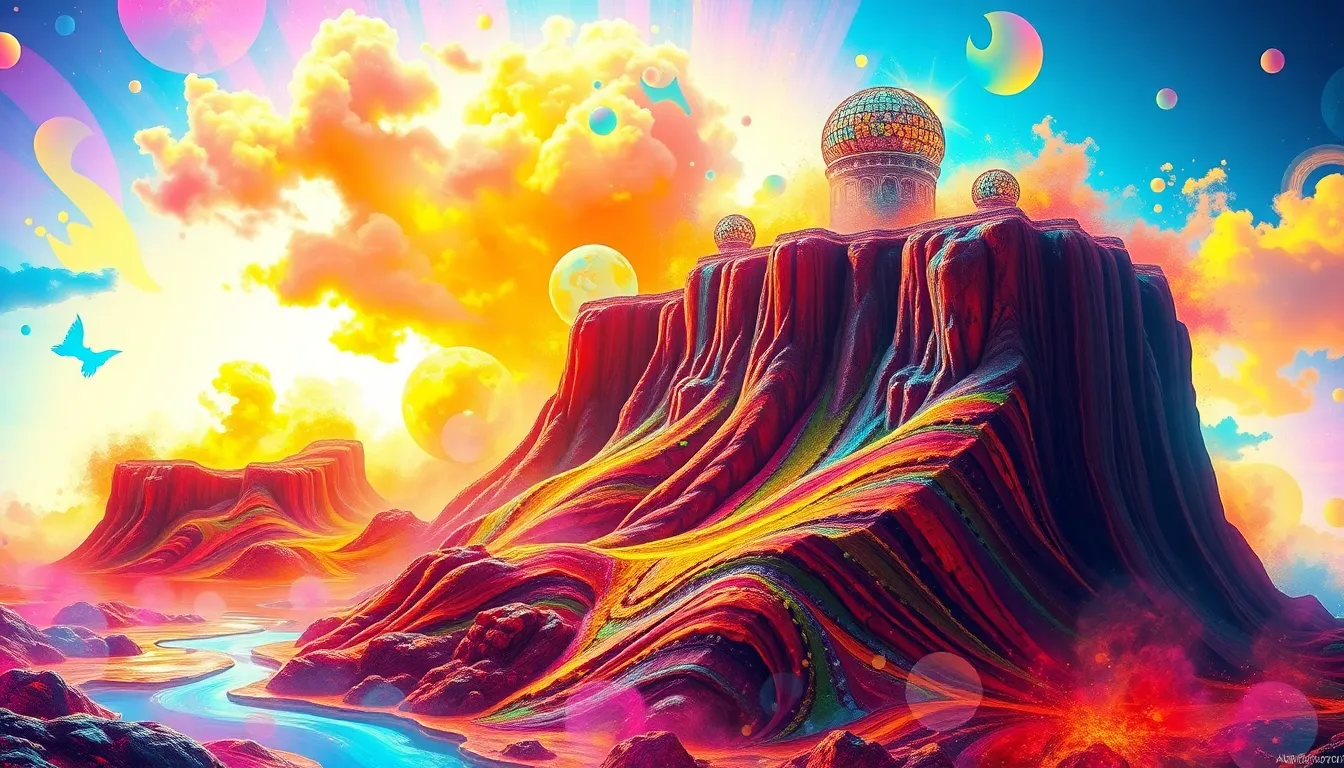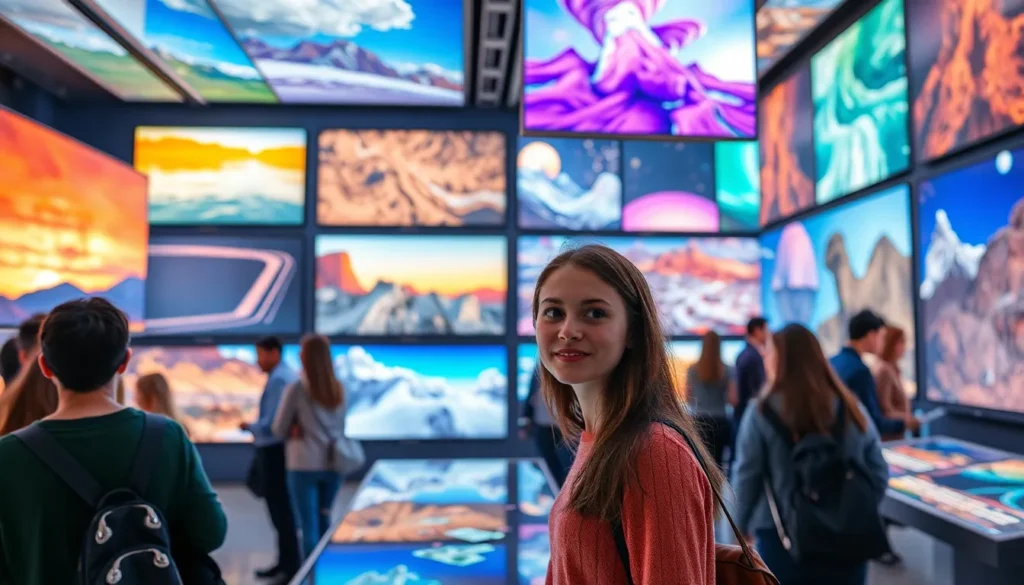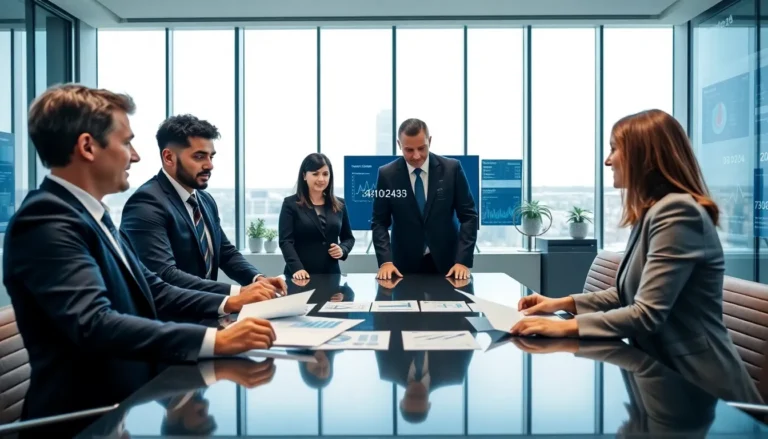Table of Contents
ToggleIn a world where creativity meets technology, AI image galleries are shaking things up like a toddler with a paintbrush. Imagine having a virtual art exhibit at your fingertips, showcasing stunning visuals generated by artificial intelligence. It’s like having a personal Picasso who never runs out of inspiration.
Overview of AI Image Gallery
AI image galleries utilize advanced algorithms to create unique visual experiences. These platforms generate artwork that draws on vast datasets, often leading to innovative interpretations of classic and modern themes. Users find a wide variety of styles, from abstract designs to photorealistic scenes, all crafted by artificial intelligence.
Many AI image galleries adopt user-friendly interfaces, allowing effortless navigation. Viewers can explore collections by themes, colors, or moods. This structured categorization enhances the search experience, helping users discover artworks that resonate with their preferences.
Some galleries even encourage interaction by allowing users to customize generated images. When users input specific parameters, they can influence the outcome of the artwork created by the AI. This feature fosters a deeper connection between the viewer and the artwork.
AI image galleries also serve as a platform for collaboration among artists and technologists. By combining traditional artistic methodologies with cutting-edge technology, they push the boundaries of creativity. These collaborations produce exhibitions that challenge conventional standards of art and creativity.
The role of AI in these galleries has sparked discussions about the future of art. Artists, critics, and enthusiasts engage in debates over authorship and authenticity. While some celebrate the innovation brought by AI, others express concerns about the implications for human creativity.
AI image galleries revolutionize the art world. They provide a space where technology meets creativity, offering endless inspiration and reimagining art accessibility. Through stunning visuals and interactive features, these galleries engage users and broaden the definition of what art can be.
Features of AI Image Gallery

AI image galleries boast a range of impressive features that enhance the user experience. These important capabilities highlight the innovative nature of AI in art creation.
Image Generation
AI image galleries excel at generating unique visuals. Algorithms utilize extensive datasets to transform concepts into stunning images. Styles can vary dramatically, covering everything from surreal landscapes to intricate patterns. Users witness the magic unfold as AI interprets themes and moods creatively. This process allows for endless variety in visual output, ensuring that there is something for everyone. Interaction takes center stage here, as viewers often engage with the technology, guiding the AI to create tailored artwork that reflects personal tastes.
Image Enhancement
AI also plays a critical role in image enhancement. Tools within these galleries often allow for real-time adjustments, refining images based on user feedback. Automated improvements, such as enhancing colors or sharpening details, elevate the overall quality of the visuals. These enhancements make artworks more appealing while maintaining the original creative intent. Users benefit from features that can transform simple images into visually stunning masterpieces. Seamless integration of these tools encourages greater exploration of the gallery, fostering a richer appreciation for the art creation process.
Benefits of Using AI Image Gallery
AI image galleries offer substantial advantages that enhance art appreciation and creativity.
Creative Freedom
Creative freedom is amplified through AI image galleries. Users encounter extensive styles and themes, enabling unique expressions of vision. Artistic boundaries dissolve as algorithms generate everything from abstract illustrations to hyper-realistic portrayals. Collaborating with AI allows artists to experiment and explore unconventional aesthetics without limitations. Additionally, customization options empower users to influence artistic direction, tailoring pieces to reflect personal preferences. In this way, AI enriches the creative process, encouraging fresh ideas that challenge traditional artistic norms.
Time-saving
Time-saving is another significant benefit of AI image galleries. Generating artwork consumes less time compared to traditional methods, allowing for faster iterations. Artists can quickly visualize concepts and test multiple ideas without extensive setup. Instant accessibility to a plethora of generated images fosters inspiration at a moment’s notice. Furthermore, automated enhancements eliminate the need for lengthy editing sessions, streamlining the workflow for creators. This efficiency enables more time for innovation, exploration, and refining artistic visions.
Popular AI Image Gallery Tools
Several AI image gallery tools enhance user experiences through innovative features and exceptional visuals. Highlighted below are three notable options.
Tool 1
DeepArt transforms regular photos into stunning works of art by leveraging neural networks. Users upload an image, choose a style, and the AI generates an artwork that merges the two seamlessly. The tool offers various artistic styles, from classic painters to contemporary designs. This diverse selection allows users to experiment with different aesthetics effortlessly. Customization options further enrich the creative process, enabling users to adjust styles and enhance final outputs. With its user-friendly interface and impressive results, DeepArt appeals to both casual creators and professional artists.
Tool 2
Artbreeder enables users to blend images and create new visuals through collaborative AI. This tool allows individuals to manipulate parameters such as color, shape, and style, resulting in unique art pieces. Combining images facilitates exploration of creative ideas quickly, while the community aspect encourages sharing and inspiration. Artists can collaborate with others, merging styles to produce unexpected outcomes. The ability to remix existing artworks adds an engaging layer to the creative process, making Artbreeder a popular choice among digital artists.
Tool 3
Runway ML serves as a powerful platform for AI-assisted image creation and editing. It integrates machine learning tools that streamline workflows and enhance creative projects. Users benefit from advanced features like real-time image manipulation and video editing. These capabilities support artists in achieving high-quality visuals with ease. Runway ML also offers various templates for projects, helping users explore different styles and formats efficiently. The combination of innovative tools and user-friendly design positions Runway ML as a leading choice for those seeking to elevate their artistic endeavors.
Limitations and Challenges
Despite the advancements in AI image galleries, several limitations and challenges remain. Quality can sometimes vary significantly. Some algorithms produce stunning images, but others may generate low-resolution or distorted visuals, undermining user experience. Users often encounter inconsistent outputs, which can frustrate those seeking high-quality art.
Complexity in user interaction presents a challenge as well. Although many interfaces aim for user-friendliness, navigating advanced customization tools requires a learning curve. Beginners might find it difficult to fully leverage the capabilities of these galleries, limiting their creative exploration. Additionally, not all AI image galleries grant equal levels of customization, restricting artistic expression for some users.
Copyright issues pose another significant concern. The debate around authorship and the ownership of AI-generated images continues to stir controversy. Artists often worry about their original works being used without permission, leading to ethical dilemmas within the art community. These complications can hinder collaboration between traditional artists and technologists.
Dependence on algorithms creates vulnerabilities. Many AI systems rely on extensive datasets; biases within these datasets may lead to unrepresentative outcomes. If the training data lacks diversity, the generated images may not reflect broader artistic perspectives. Users seeking inclusive representation might struggle to find this in AI-produced works.
Skepticism about AI’s role in creativity persists. Critics argue that AI cannot replicate the emotional depth and intent that human artists impart into their creations. This viewpoint can alienate traditional art enthusiasts from embracing AI image galleries, slowing their adoption within the art world.
Finally, access to advanced tools and platforms can limit potential users. Not everyone has the financial means to invest in premium AI image generation services, creating disparities in who can engage with this innovative art form. Thus, though AI image galleries foster creativity, they also carry inherent limitations that influence their overall impact.
AI image galleries are reshaping the landscape of artistic expression by merging technology with creativity. They provide users with an unprecedented opportunity to explore and interact with art in ways previously unimaginable. The ability to customize and influence the creation process fosters a unique connection between the viewer and the artwork.
Despite the challenges and debates surrounding AI’s role in art, these galleries stand as a testament to innovation. They not only enhance accessibility but also encourage collaboration between artists and technologists. As the art world continues to evolve, AI image galleries will likely play a pivotal role in defining the future of creativity and expression.




